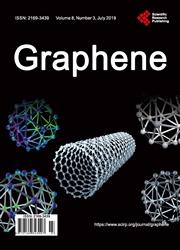2D Materials as Protective Coating against Low and Middle Temperature (100?C - 300?C) Corrosion-Erosion in Waste to Energy Plant: Case of Graphene
引用次数: 1
Abstract
The combustion of MSW contains several species which if liberated into the flue gas will participate in erosion-corrosion reactions with the alloy surface and with the oxide layers. Actually with the evolution of material science and the discovery of 2D materials, we can handle that situation as well as possible. The graphene as 2D material presents a lot of advantage due to it physical properties such: melting point, boiling point and thermal conductivity, which can help to manage the problem of low and middle temperature (100˚C -300˚C) erosion-corrosion into the boiler wall of waste to energy. The aim of the study was focused on analyzing the resistance at low and middle temperature (100˚C - 300˚C) in the enclosed environment and the corrosion-erosion resistance abilities of the graphene sheet as the 2D protective coating material. This paper analyzed the possibility of using the graphene in the aggressive environment which is waste to energy boiler. The results obtained from this study after simulation using ANSYS software which is one of the best software for simulations showed that Graphene protects the furnace walls against corrosion-erosion for temperatures lower than 400˚C and that in the presence of certain impurities such as: sodium (Na), sulfur (S), chloride (Cl) and Phosphorous (P), Sodium Chloride (NaCl), Hydrogen Chloride Dioxide Carbone 2 ) of Sulfur 2二维材料作为中低温(100?C - 300°C)废物发电厂的腐蚀-侵蚀:以石墨烯为例
城市生活垃圾的燃烧含有几种物质,如果释放到烟气中,就会与合金表面和氧化层发生侵蚀-腐蚀反应。实际上,随着材料科学的发展和二维材料的发现,我们可以尽可能地处理这种情况。石墨烯作为二维材料,由于其熔点、沸点和导热性等物理特性,具有很多优势,可以帮助解决垃圾发电锅炉壁面的中低温(100˚C -300˚C)侵蚀腐蚀问题。研究了封闭环境中中低温(100˚C - 300˚C)下石墨烯片的耐蚀性能,以及石墨烯片作为二维保护涂层材料的耐蚀性能。分析了石墨烯在废能锅炉腐蚀环境中应用的可能性。利用最先进的模拟软件ANSYS软件进行模拟后得到的结果表明,石墨烯在温度低于400℃,且存在某些杂质(如钠(Na)、硫(S)、氯化物(Cl)和磷(P)、氯化钠(NaCl)、氯化氢(co2)或硫2)时,可以保护炉壁免受腐蚀侵蚀
本文章由计算机程序翻译,如有差异,请以英文原文为准。
求助全文
约1分钟内获得全文
求助全文

 求助内容:
求助内容: 应助结果提醒方式:
应助结果提醒方式:


